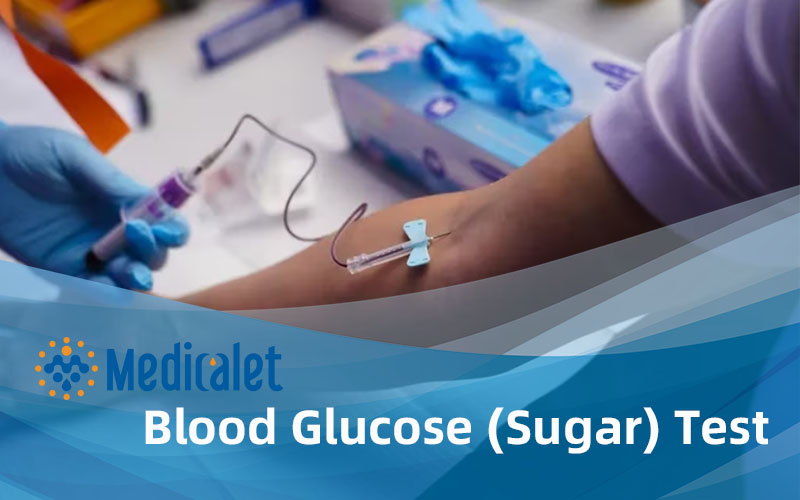
Blood Glucose (Sugar) Test
A blood glucose test measures the level of glucose (sugar) in your blood. The test can involve a finger prick or a blood draw from your vein. Healthcare providers most commonly use blood glucose tests to screen for Type 2 diabetes, which is a common condition.
What is a blood glucose (sugar) test?
A blood glucose test is a blood test that mainly screens for diabetes by measuring the level of glucose (sugar) in your blood.
There are two main types of blood glucose tests:
Capillary blood glucose test: A healthcare professional collects a drop of blood — usually from a fingertip prick. These tests involve a test strip and glucose meter (glucometer), which show your blood sugar level within seconds.
Venous (plasma) blood glucose test: A phlebotomist collects a sample of blood from a vein (venipuncture). These glucose tests are usually part of a blood panel, such as a basic metabolic panel. The provider will send the samples to a lab. There, a medical laboratory scientist will prepare your samples and perform the test on machines known as analyzers.
Venous blood glucose tests are generally more accurate than capillary blood glucose tests.
What is blood glucose (sugar)?
Glucose (sugar) mainly comes from carbohydrates in the food and drinks you consume. It’s your body’s main source of energy. Your blood carries glucose to all of your body’s cells to use for energy.
When would I need a blood glucose test?
You may be having symptoms of high blood sugar or low blood sugar, which could indicate diabetes or another condition.
If you take a long-term medication that affects your blood sugar levels, such as corticosteroids, you may need routine glucose blood tests to monitor your levels.
The most common use of a blood glucose test is to screen for Type 2 diabetes (T2D), which is a common condition. Certain people are at risk for developing Type 2 diabetes. If you have risk factors, your provider will likely recommend regular screening no matter your age. The American Diabetes Association recommends regular screening for anyone age 35 or older.
Your provider will also order a blood glucose test if you have symptoms of high blood sugar (hyperglycemia) or low blood sugar (hypoglycemia).
Symptoms of diabetes and high blood sugar include:
Feeling very thirsty (polydipsia).
Frequent urination (polyuria).
Fatigue.
Feeling very hungry (polyphagia).
Unexplained weight loss.
Blurred vision.
Slow healing of cuts or sores.
If you or your child have these symptoms in addition to vomiting, deep labored breathing and/or confusion, go to the nearest emergency room as soon as possible. You may have diabetes-related ketoacidosis, which is a life-threatening condition.
Symptoms of low blood sugar include:
Shaking or trembling.
Sweating and chills.
Dizziness or lightheadedness.
Faster heart rate.
Intense hunger.
Anxiousness or irritability.You need to consume carbohydrates (sugar) to treat hypoglycemia, such as a banana or apple juice. Severe hypoglycemia can be life-threatening.
Who performs a blood glucose test?
Many healthcare providers, such as nurses, can perform a capillary (finger prick) blood glucose test. These tests involve a glucose meter and a test strip, which show your blood sugar result within seconds.
Phlebotomists typically perform venous blood glucose tests. They send the samples to a lab for testing.
